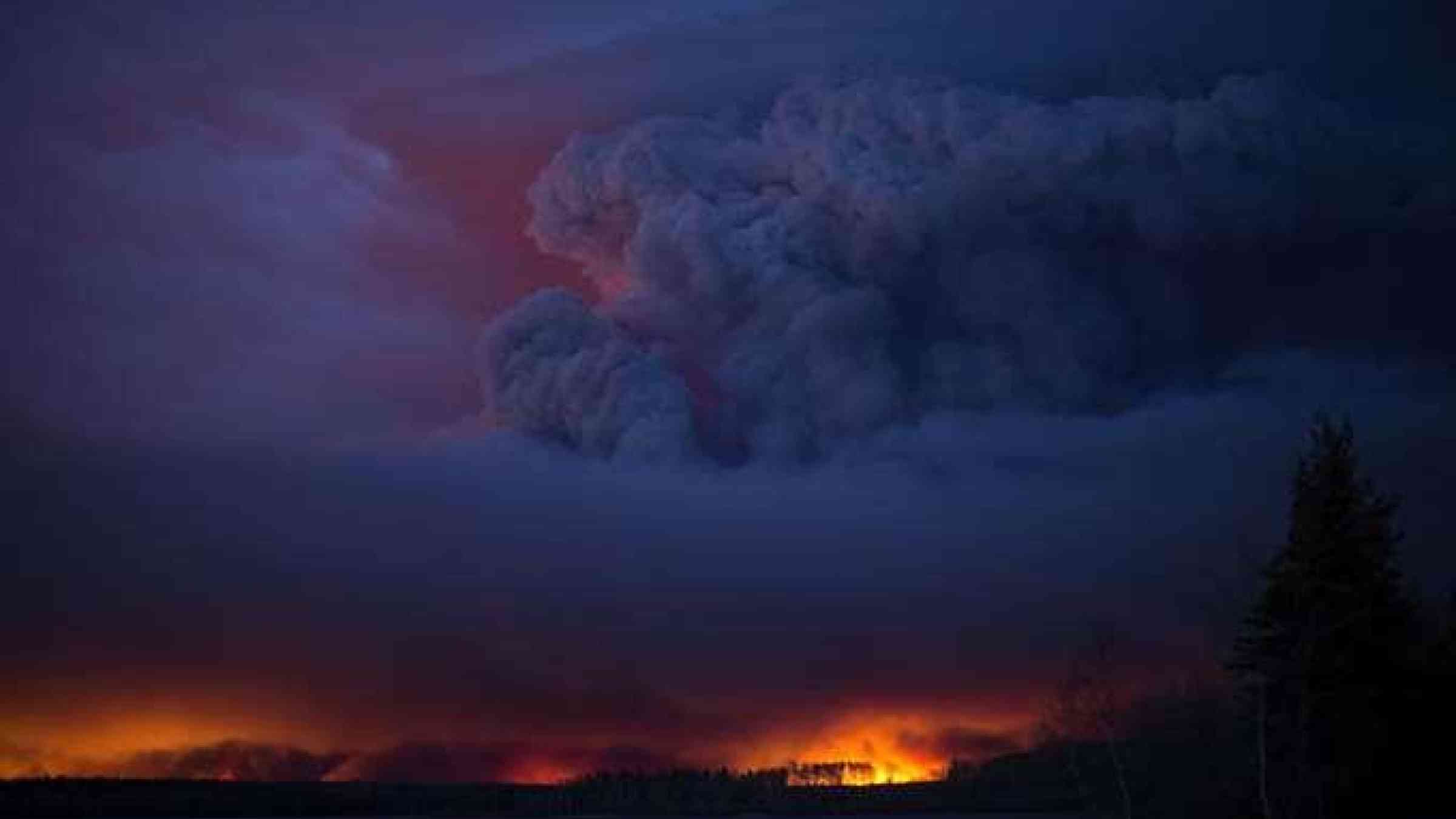Please help us improve PreventionWeb by taking this brief survey. Your input will allow us to better serve the needs of the DRR community.
Era of mega-fires started in the 1980s and Fort McMurray is not the end

Photo by Flickr user Premier of Alberta CC BY-ND 2.0 https://flic.kr/p/GtBSyo
Once rare events, mega-fires have now become common largely because of climate change and because effective wildfire suppression over decades has caused fuel to build up in the forests. There are more – and probably bigger fires to come.
The solution, say fire experts, is to reduce fuel loads in the forests before they explode.
That means more controlled burns and the creation of “fuel breaks” by widening roads or logging strategically around communities.
But a report last year by B.C.’s Forest Practices Board (FPB) found the program has fallen short, stating that an “investigation found that most communities in B.C. remain vulnerable to catastrophic wildfire.”
The FPB said some good preventive work has been done under the program, but not enough.
“Unfortunately, over the past 10 years, only 10 per cent or less of hazardous forest fuels have been treated. Funding to protect at-risk communities in B.C. by removing interface fuel sources is inadequate,” stated the report.
Explore further
Please note: Content is displayed as last posted by a PreventionWeb community member or editor. The views expressed therein are not necessarily those of UNDRR, PreventionWeb, or its sponsors. See our terms of use
Is this page useful?
Yes No Report an issue on this pageThank you. If you have 2 minutes, we would benefit from additional feedback (link opens in a new window).